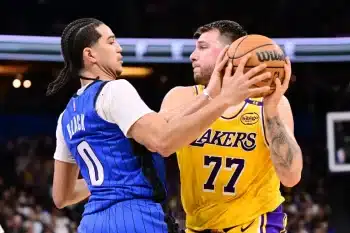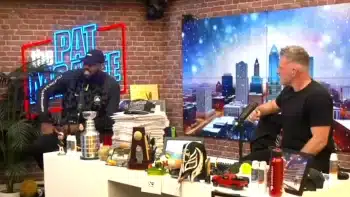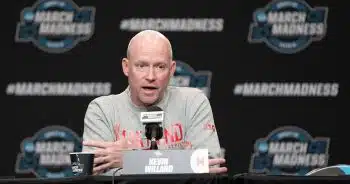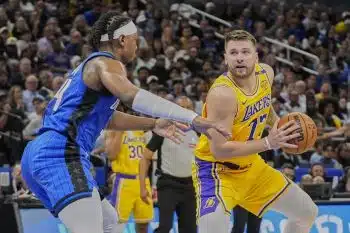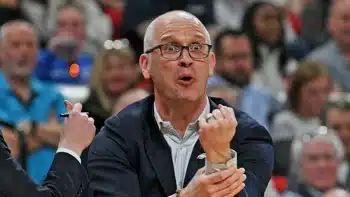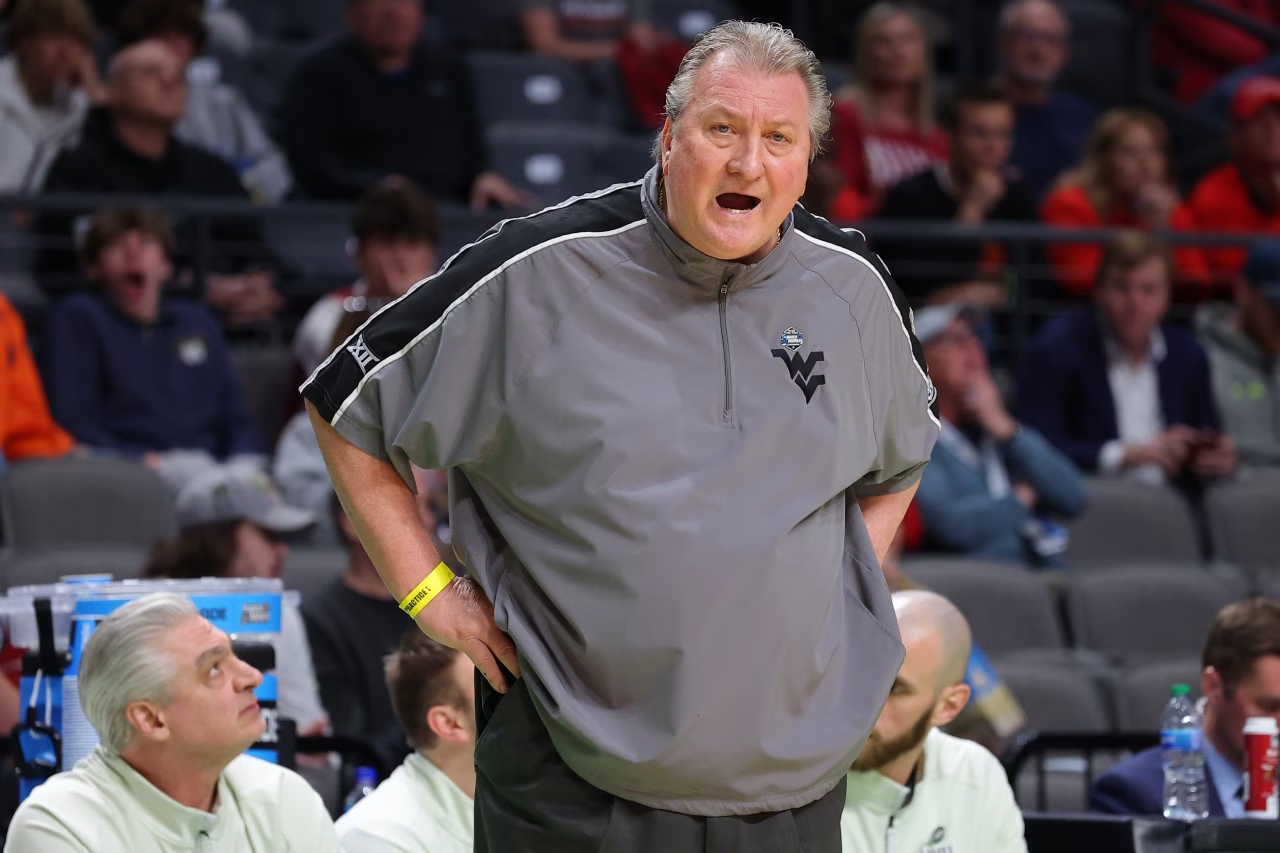NBA
NBA Daily: Minnesota, Meet Naz Reid
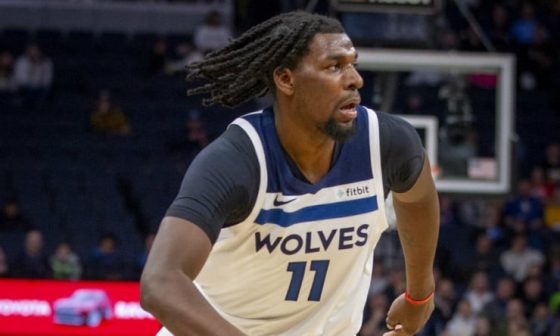
Sometimes an article stems entirely from a text. A friend watching his 60-inch screen in his new house wonders something and technology allows him to send the question to a supposed “insider.”
“Wolves questions: Has Dieng ever played PF with Towns at center? If yes, why don’t they do that more often? If no, why not?” this friend asked earlier this week. “Is it simply no because Dieng is too slow?”
In order: No. The theoretical system. The league today and the Minnesota Timberwolves’ roster as is.
Those three sentence fragments do not make for a lengthy read here, though, so to expound on them …
Literally, Gorgui Dieng has not played at power forward with Karl-Anthony Towns this season, per cleaningtheglass.com. Even going beyond positional specifics, the two have shared the court for only 17 possessions. That has hardly been a Dieng distinction; Towns has played only 16.02 percent of his possessions with another big this season.
The vast majority of those (212 of 268) featured Towns paired with Jordan Bell, a combination that sheds light on why Minnesota avoids pairing Towns with Dieng, despite Dieng’s general reliability.
Bell made his second 3-pointer of the season Thursday night late in a blowout of the Portland Trail Blazers. For novelty’s sake, and to give credit where it is due for a successful though unearned heat check:
Bell is not a shooting threat in any regard, despite that quality take. When he plays alongside Towns, the Timberwolves still have four shooters around one man in the post, their intended system. Minnesota entered this season intent on shooting more threes and relying on versatile wings to do it. They have a bevy of wings — Andrew Wiggins, Robert Covington, Josh Okogie, Jake Layman (though sidelined by turf toe), Treveon Graham, Keita Bates-Diop — but the shooting innate to the crop is lacking.
That lack of shooting has been a contributing factor to the Timberwolves falling to 15-22, yet the devotion to the wings is not about to change this season, as elaborated on by Jack Winter. First-year president Gersson Rosas and head coach Ryan Saunders are insistent on implementing a modern pace-and-space offensive system, one contingent on shooting from either close or long-range, not between.
When Towns has been paired with a non-Bell big, be it Dieng or Noah Vonleh, Minnesota has taken 65.4 percent of its attempts at the rim or beyond the arc; when Towns plays without another big, that number jumps to 81.1 percent.
Admittedly, the non-Bell, two-big data is a small sample, only 56 possessions, but the difference is stark enough to illustrate what Rosas, Saunders and the Timberwolves worry about with two bigs in the game. Not only do post-ups become more common, but a clogged lane encourages mid-range jumpers, as well.
When Towns has been paired with Bell, the shots at the rim rise while the deep attempts fall, but the combined total is still 80.6 percent. Bell’s presence as a rim-runner allows Towns to roam along the perimeter, preserving the four-out system. With Dieng or Vonleh, Towns is needed a bit more in the paint to provide an interior offensive presence they do not, and even if Dieng is shooting 36.5 percent from deep this season, attempting only 2.6 threes per game is not enough to alter the defense’s approach.
Insert Naz Reid.
Reid is averaging only 7.3 points, has played in just eight games and shoots an up-and-down 32.3 percent from three, but the texted question would have been better-served asking about Reid.
The rookie out of LSU has yet to play alongside Towns. Redi’s surge the last two weeks has come in large part because a knee injury has kept the franchise cornerstone on the bench for 12 games and counting. But in the last six games, Reid has taken nearly five threes per game. He may have made only 31 percent of them, but he has been effective enough to prove he is more than a rim-runner in the pick-and-roll.
If Towns were on the court on that possession instead of, for example, Jarrett Culver in the near corner, the defensive spacing would not be changed much. If anything, the Brooklyn Nets would have been spread further, as Towns is a much better shooter than Culver. Jeff Teague would have had more space to operate on his drive, all while having Reid ready to shoot from deep.
On such a possession, Dieng is not respected as a rim-runner. The defense hedges against his shot at the expense of the paint. The inverse applies with Bell.
Much like a 3-and-D wing, a rim-running big who can shoot from deep is the rarest of commodities in the NBA. Minnesota has one in its superstar, pending his return to action. It may have another in an undrafted rookie.
The catch comes in that Towns’ return will likely do more than cut into Reid’s playing time; it will likely send him back to the Iowa Wolves for the most part.
In time, with development, Reid may spend entire seasons working alongside Towns. While Dieng has one more, $17.3 million season on his contract, and both Bell and Vonleh are free agents after this season, the Timberwolves have Reid under contract for $6.08 million over four years.
Dieng has long been an utmost professional, but his deliberate game limits him alongside Towns, no matter how well he has played — 13.3 points and 9.3 rebounds — during Towns’ prolonged absence. The latter can, in fact, explain the former.
The question may instead someday be why don’t the Wolves play Reid with Towns, but Minnesota’s wanted system should force that issue before it needs to be asked.
